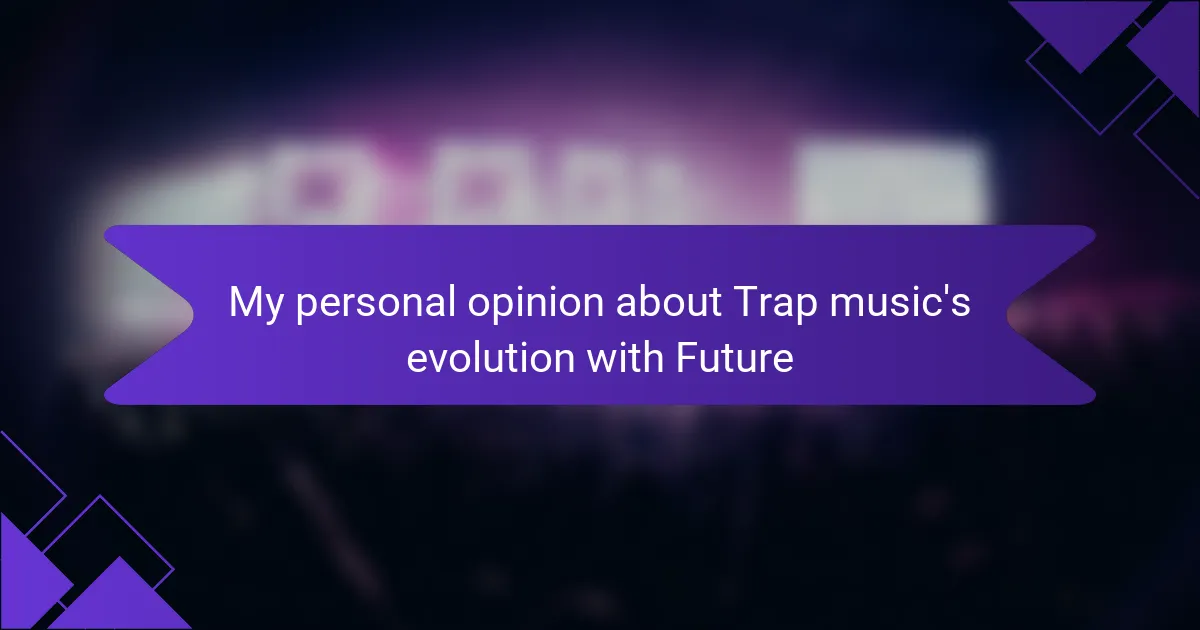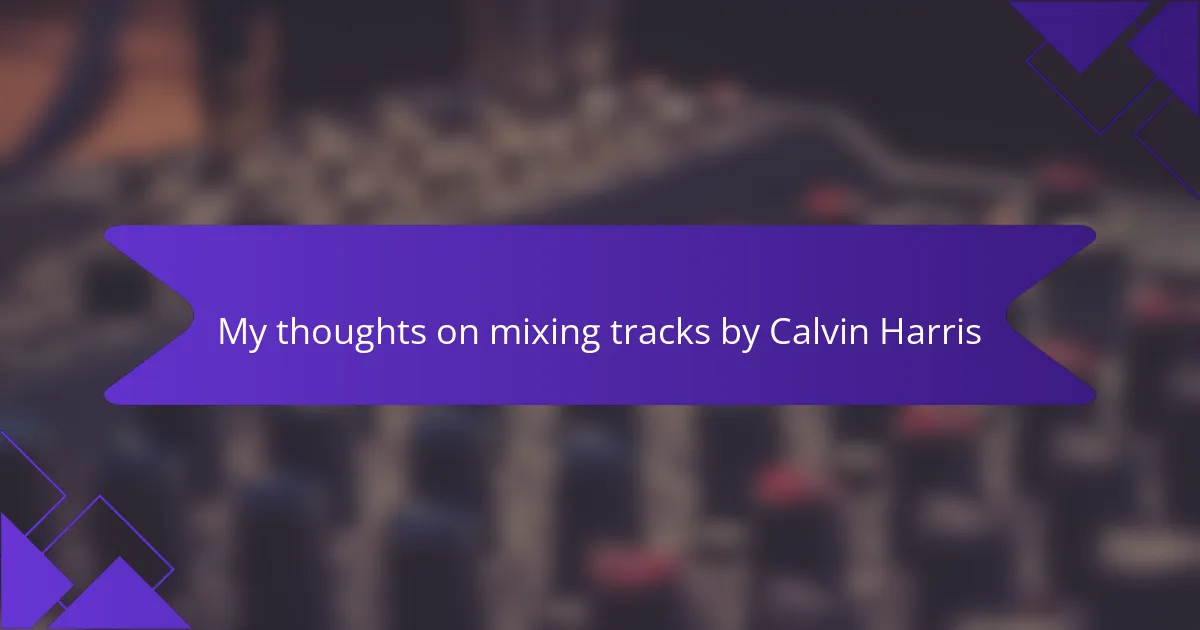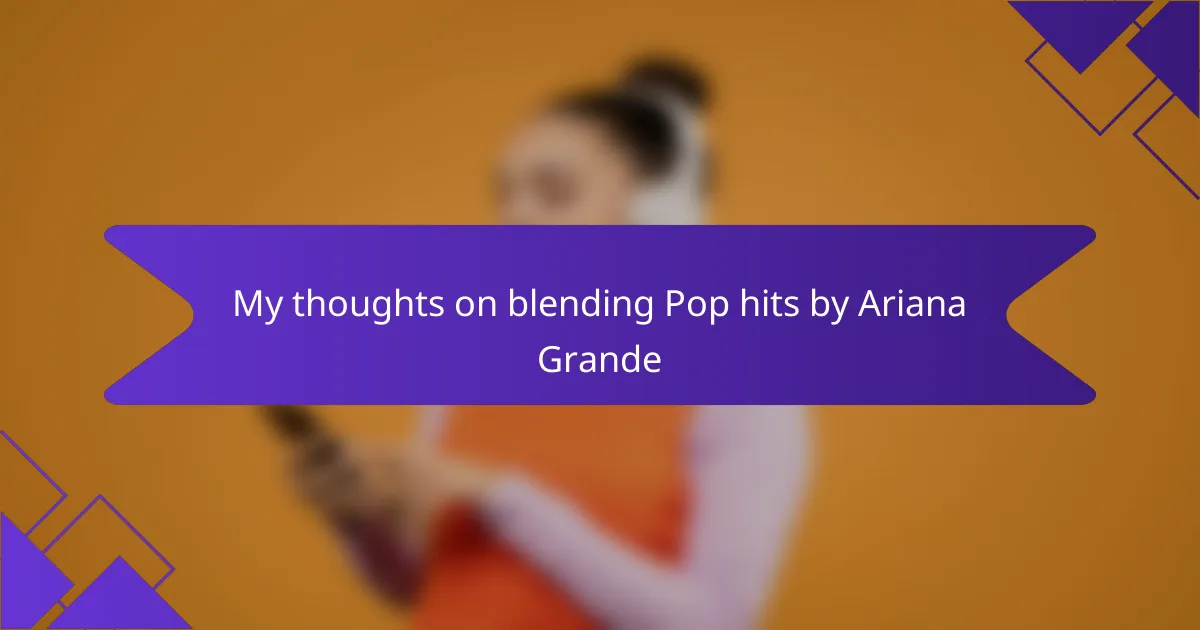Key takeaways
- DJ entertainment is a dynamic blend of genres, notably using jazz’s improvisational qualities to enhance performances.
- Jazz elements in DJ culture promote emotional connections and spontaneous creativity, making each performance unique.
- Miles Davis’s innovative style and emotional depth influence DJs to explore new sonic landscapes and storytelling through music.
- Creating jazz-inspired DJ setlists involves fusing classic jazz tracks with modern beats, maintaining the timeless essence of jazz while appealing to contemporary audiences.

Understanding DJ Entertainment
DJ entertainment is a vibrant realm that constantly evolves, blending genres and creating unique soundscapes for listeners. I remember attending a DJ set where the artist seamlessly mixed hip-hop beats with classic jazz samples. It was a revelation that illuminated the creative possibilities within the DJ community, making me appreciate how different musical forms can influence and enhance one another.
In my experience, understanding DJ entertainment requires recognizing its roots and how it interacts with various musical styles. Jazz, with its improvisation and rich history, offers a wealth of inspiration for DJs. Here are some key points to consider:
- DJing can incorporate jazz elements, adding layers of complexity and nuance to a set.
- The improvisational nature of jazz is mirrored in how DJs make spontaneous decisions on the fly during performances.
- Through sampling, jazz records can breathe new life into contemporary beats, showcasing a delightful fusion of old and new.
- Engaging with different genres helps DJs create a unique identity and connect emotionally with their audiences.

The Role of Jazz in DJ Culture
Jazz plays a vital role in DJ culture by infusing sets with a sense of rhythm and spontaneity. I remember the first time I heard a DJ weave a smooth jazz sample seamlessly into a house track; it felt like a conversation—one that flowed and changed in real-time. How incredible is it that a single trumpet note can spark a new direction in a dance floor vibe?
In my journeys as a listener, I’ve been amazed at how jazz’s improvisational spirit mirrors the art of DJing. DJs make decisions on the fly, just like jazz musicians, creating a dynamic atmosphere that keeps everyone engaged. This improvisational exchange transforms what could be a standard performance into an experience that feels alive.
Sampling jazz has allowed DJs to breathe fresh air into various genres, creating a bridge between the past and the present. I’ve often found myself reimagining old classics, feeling an emotional connection to the music that draws me in. It’s fascinating how this blend can evoke memories and emotions, connecting people through a shared appreciation for the artistry of sound.
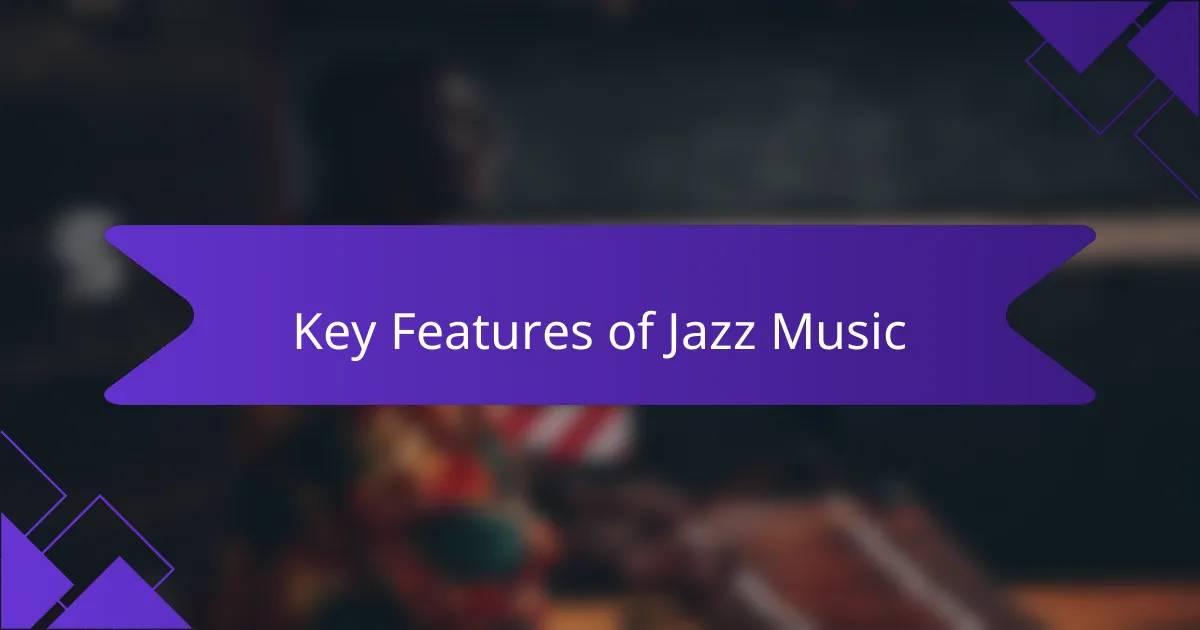
Key Features of Jazz Music
Jazz music holds a unique charm that draws listeners in, and it’s often the rich, expressive sounds that truly captivate the heart. One of the key features of jazz is its improvisational nature, which allows musicians to communicate their emotions spontaneously. I remember the first time I heard Miles Davis’s “So What” — it was like he was having a conversation with me through his trumpet, inviting me into a world where every note was an expression of feeling.
Another significant aspect is the complex rhythms and syncopation that characterize jazz. As I listened to more tracks, I noticed how the beats seemed to dance around one another, creating a lively and dynamic environment. This intricate interplay between musicians, whether in a small combo or a big band, paints a beautiful picture of collaboration and creativity.
Finally, the emotional depth of jazz cannot be overstated. Each performance transports you, often evoking nostalgia or joy. When I hear a soulful ballad like “Blue in Green,” I feel like I’m wrapped in a warm blanket, reflecting on moments that are both personal and universal. It’s these features—improvisation, rhythm, and emotion—that make jazz, and particularly Miles Davis, resonate so deeply with me.
| Feature | Description |
|---|---|
| Improvisation | Musicians create music spontaneously, expressing deep emotions through their instruments. |
| Complex Rhythms | Uses syncopation and diverse beats that create lively and dynamic musical exchanges. |
| Emotional Depth | Each performance evokes powerful feelings, often creating a connection with personal experiences. |
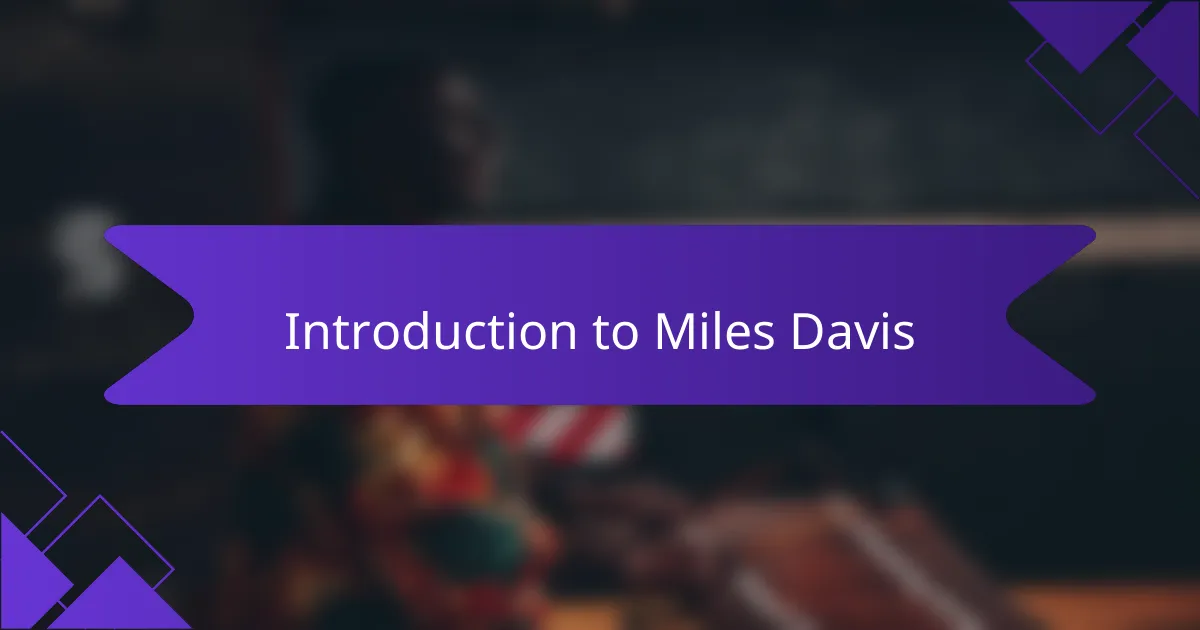
Introduction to Miles Davis
Miles Davis is a legendary figure in jazz, known for his innovative spirit and boundary-pushing artistry. His ability to blend various genres, from bebop to cool jazz and beyond, resonated with me on a personal level. I still remember the first time I heard “Kind of Blue”; it felt like stepping into a dark, velvety room where every note wrapped around my thoughts, stirring deep emotions within me.
His distinct sound and the way he expressed profound feelings through his trumpet opened my eyes to jazz’s capability to convey complex emotions. I found myself repeatedly drawn to his music, intrigued by not just the notes but the stories he told through each improvisation.
Here’s a comparison table that encapsulates some key aspects of Miles Davis:
| Aspect | Description |
|---|---|
| Early Life | Born May 26, 1926, in Alton, Illinois; started playing the trumpet at a young age. |
| Major Works | “Kind of Blue,” “Bitches Brew,” and “Sketches of Spain” reflect his evolution as an artist. |
| Influence | Revolutionized jazz, influencing countless musicians across various genres. |
| Style | Known for smooth, lyrical melodies and innovative use of silence and space. |
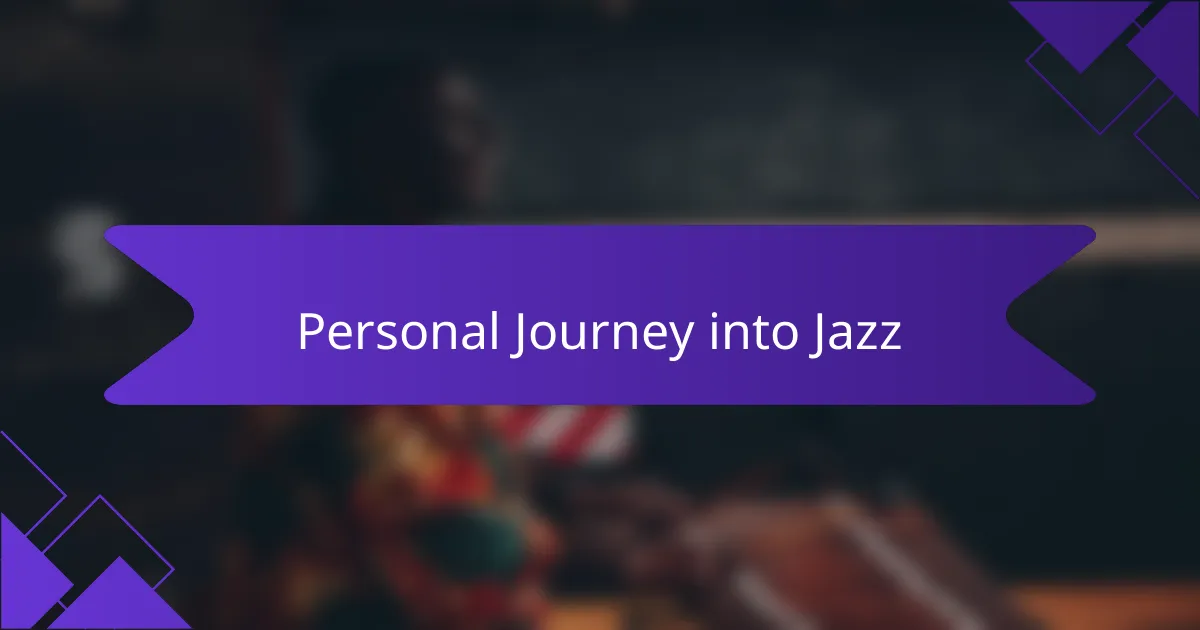
Personal Journey into Jazz
Jazz has always felt like a journey for me, a path that winds through emotions and memories. I recall sitting in my room, the dim light casting shadows across the walls, as I first immersed myself in Miles Davis’s “Sketches of Spain.” It was a captivating experience; the music enveloped me in a lush soundscape that felt both foreign and familiar. Each note seemed to unveil layers of my psyche, stirring feelings I didn’t even know were there. Have you ever had a song transport you to a different time and place? That’s the magic of jazz.
As I ventured deeper, I began to appreciate how jazz can be a conversation—not just between musicians but between the listener and the music itself. I remember attending a live jazz session where a soloist would explore a theme, and the accompanying band responded with their own improvisation. It was like witnessing a thrilling dialogue unfold, where emotions were shared and stories were told through sound. It made me realize that in jazz, every performance is a unique experience, a blend of spontaneity and intention that speaks to the human condition.
Listening to Miles Davis taught me that jazz isn’t just about the notes played; it’s about the spaces in between. I often found myself reflecting on my life during those silent moments following a poignant phrase. There’s a lesson in embracing uncertainty, learning how to appreciate both the highs and lows. Isn’t it fascinating how these nuances in jazz reflect our own experiences? They echo the complexities of life, reminding us that beauty often arises from improvisation, much like the best DJ sets.
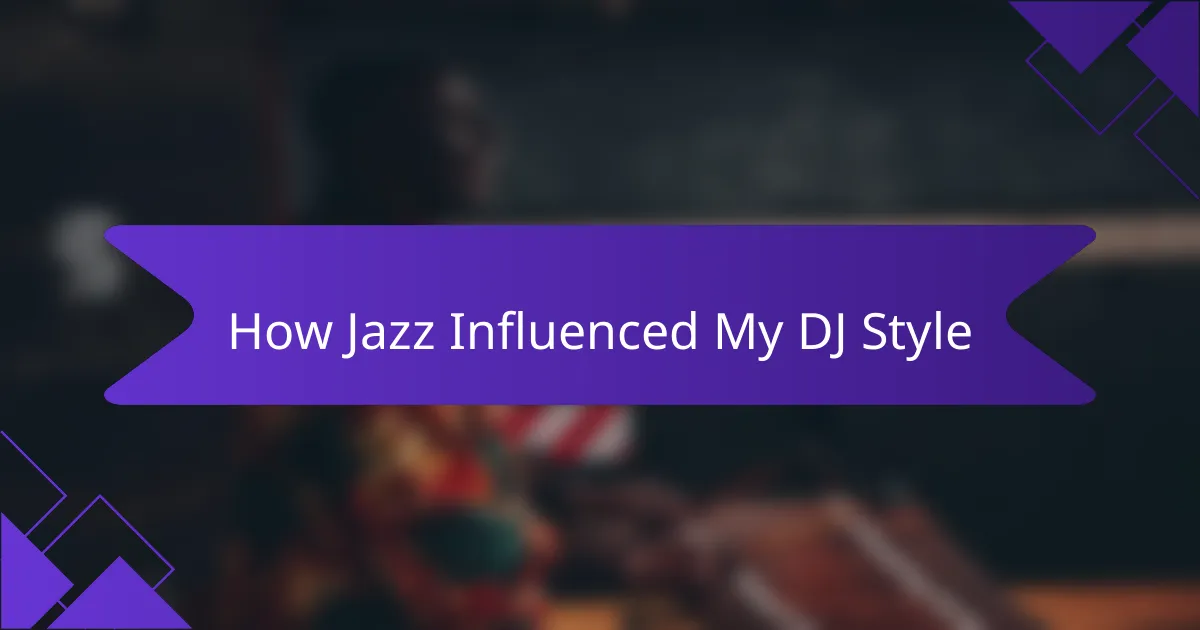
How Jazz Influenced My DJ Style
Jazz has been a profound influence on my DJ style, shaping the way I approach blends and transitions. I remember the first time I spun a Miles Davis track at a gig—the way his improvisational elements encouraged me to take risks and flow with the crowd’s energy was transformative. The subtle complexities in his music taught me to be more experimental; I began to incorporate more unexpected samples and rhythmic changes into my sets, creating a unique sonic experience.
Embracing jazz has also deepened my appreciation for musical storytelling. Every transition in a set now feels like a narrative arc, much like a good jazz composition. Just as Davis experimented with silence and spaciousness, I learned the power of letting beats breathe, allowing moments where the audience can get lost in the atmosphere before building back up to an energetic peak.
- Jazz improvisation teaches flexibility in set selections.
- The emotional depth of jazz allows for more meaningful connections with the audience.
- Experimenting with unconventional samples enhances creativity in mixing.
- The rhythm of jazz influences beat-matching techniques.
- Moments of silence can be as impactful as playing a track.
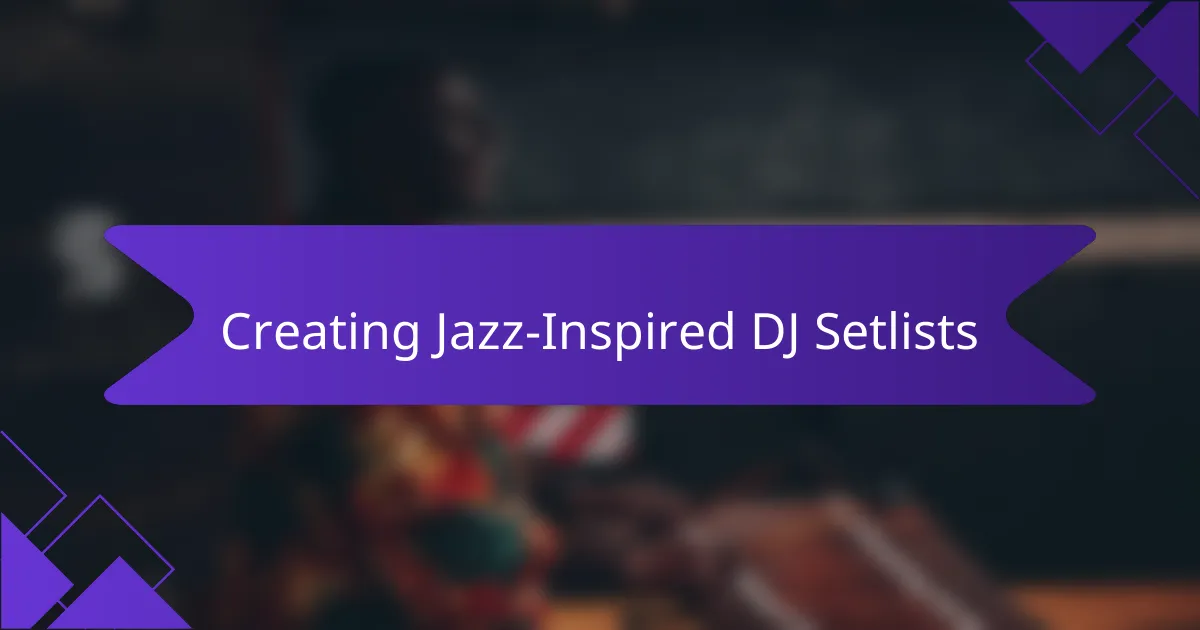
Creating Jazz-Inspired DJ Setlists
Creating a jazz-inspired DJ setlist can evoke the same improvisational spirit that defines jazz music. Drawing inspiration from Miles Davis, I often blend traditional jazz elements with modern beats. For instance, I’ll incorporate a trumpet solo from “So What” over a smooth electronic groove, creating a unique sound experience that resonates emotionally with the audience.
When crafting these setlists, I think about the energy and mood I want to create. Mixing iconic jazz tracks with hip-hop rhythms showcases that timeless quality of jazz while keeping it fresh and relatable for a diverse crowd.
Here’s a simple comparison of classic jazz tracks and their potential modern DJ remix counterparts:
| Classic Jazz Track | Modern DJ Remix Concept |
|---|---|
| So What – Miles Davis | Hip-Hop beat overlay with trumpet samples |
| Take Five – Dave Brubeck | Deep house rhythm with saxophone riffs |
| My Favorite Things – John Coltrane | Electro-swing remix with upbeat tempo |
